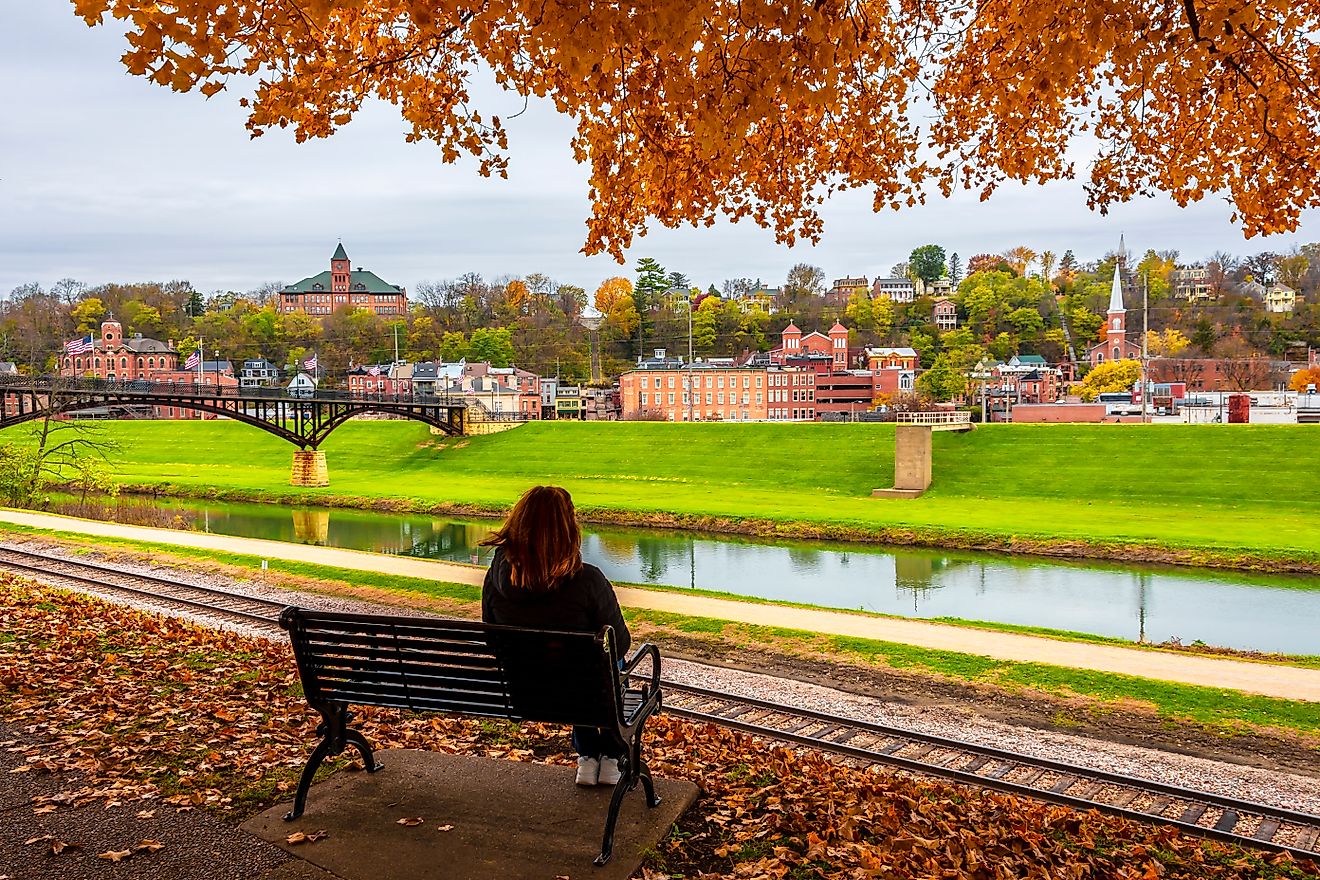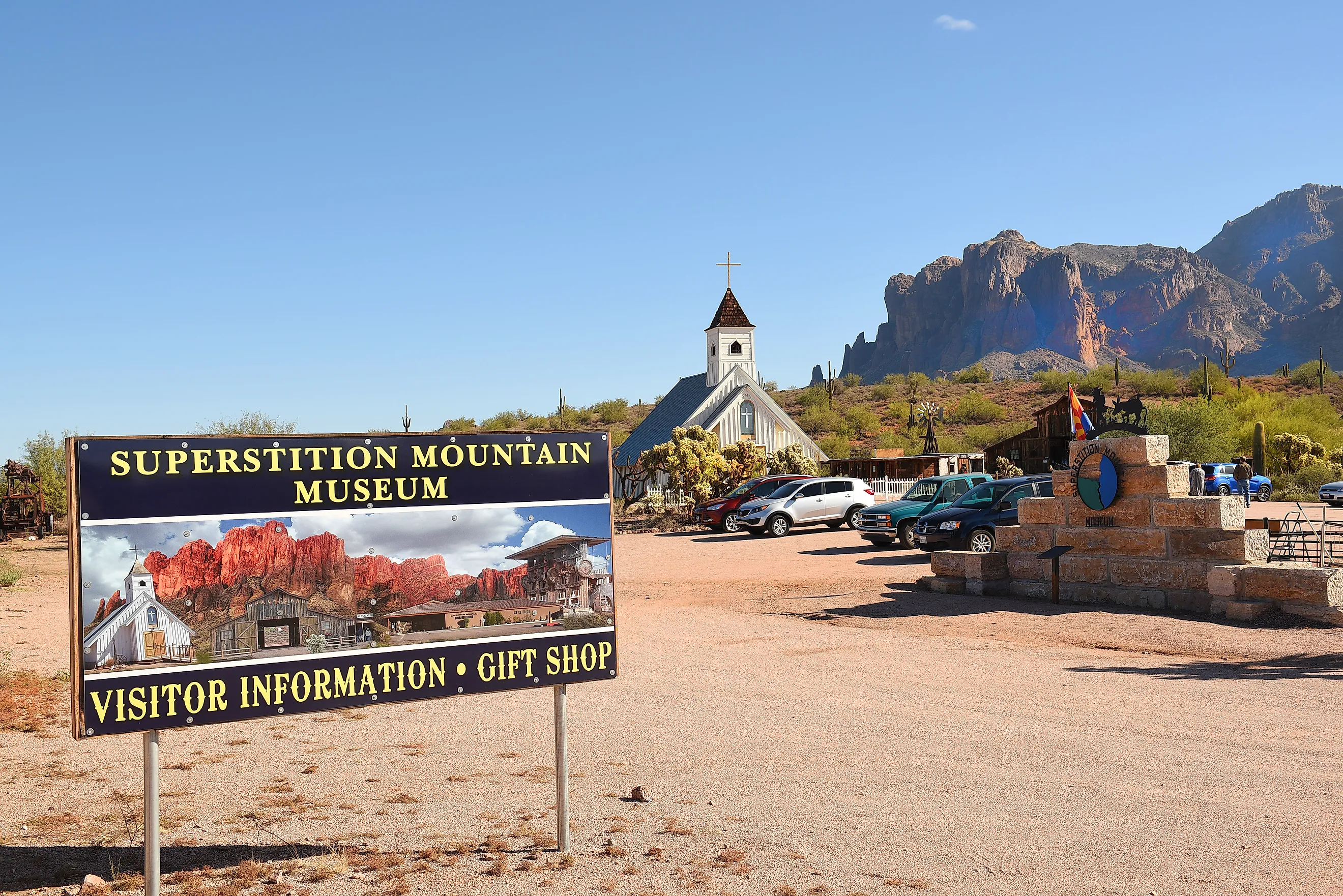
9 Best Museums In Arizona
The nine best museums in Arizona are as diverse and surprising as the desert itself. Step into history at the Yuma Territorial Prison, descend into a real missile silo in Sahuarita, or gaze at masterpieces by Monet and Rivera in downtown Phoenix. Hunt for the mythical Lost Dutchman’s gold, marvel at dinosaur fossils in Mesa, or explore the best-preserved meteor impact site on Earth. Whether you’re drawn to art, adventure, science, or sheer oddity, Arizona’s museums promise stories as bold and colorful as the landscape around them.
Titan Missile Museum, Sahuarita
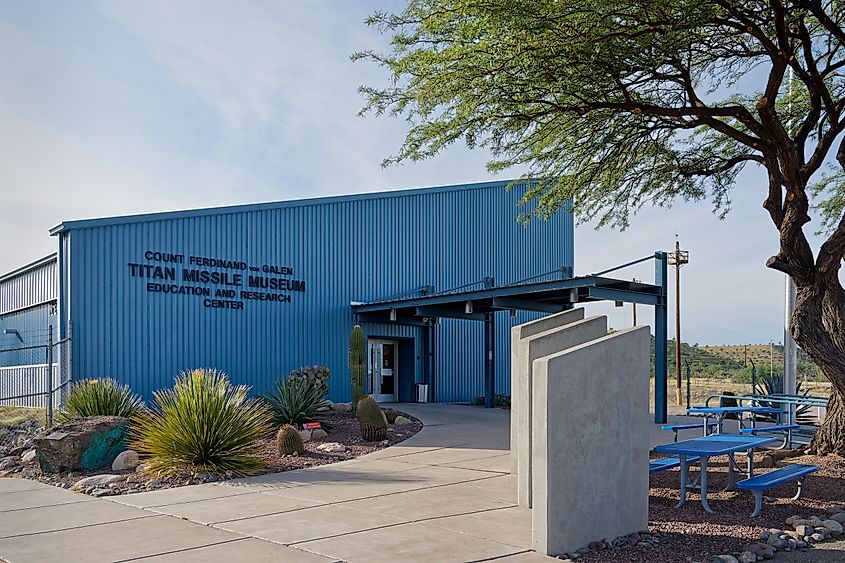
If you’re ready for a trip back to the Cold War era, the Titan Missile Museum offers a rare glimpse into the days when the United States stood on constant alert from 1963 to 1982. A National Historic Landmark, the museum is in Sahuarita, a small town in the Sonoran Desert. The museum is situated within a genuine missile silo, the Titan II Missile Site 571-7, a former U.S. Air Force launch site. Today, visitors can descend 55 steps into the underground control center and silo, see the Titan II intercontinental ballistic missile still in place, and explore the launch control room, blast doors, and tunnels during a 45-minute guided tour.
The museum first opened its doors in 1987 and has since welcomed over 1.5 million missile enthusiasts, history buffs, and dark tourists. Thanks to its unique role as being the sole remaining Titan II Intercontinental Ballistic Missile (ICBM) complex of the 54 that were “on alert” during the Cold War between 1963 and 1987, the location was used in the Star Trek movie “First Contact” and in a short documentary on nuclear tourism by National Geographic.
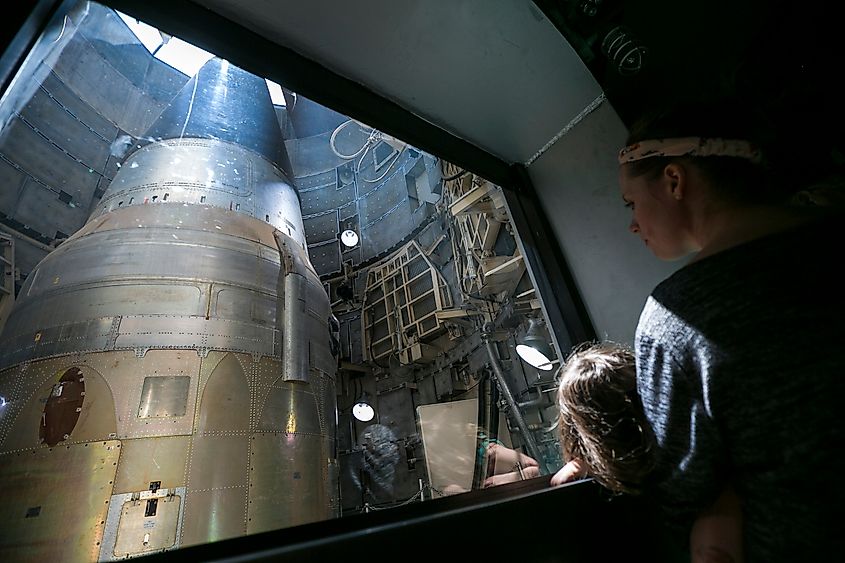
After exploring the underground missile silo and stepping back into daylight, stretch your legs and soak in the beauty of the saguaro-studded desert landscape in the nearby Madera Canyon, part of the Santa Rita Mountains. Rated one of the top birding hotspots in the U.S., over 256 species of birds have been documented in the canyon.
Poozeum, Williams
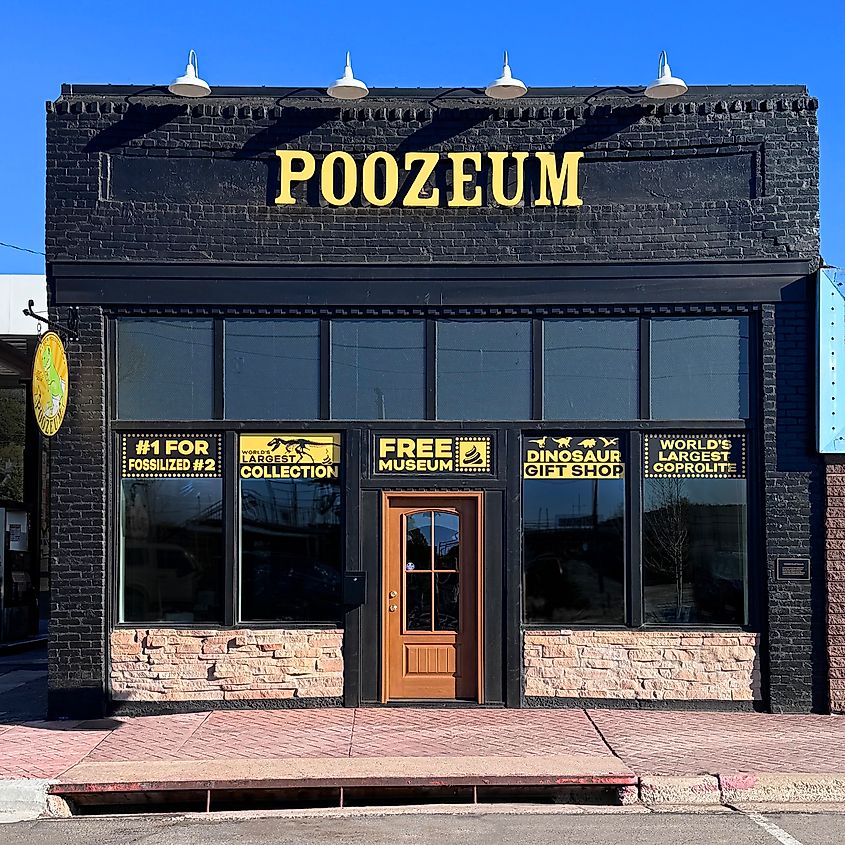
Pack up your curious kids for a fun trip to the free Poozeum in the heart of Williams, Arizona, also known as the gateway to the Grand Canyon. A quirky museum devoted entirely to fossilized poop (or coprolites), sure to appeal to fans of films like “Jurassic Park,” “Night at the Museum,” or “National Treasure,” who love a mix of science and silliness. Highlights in the museum include the largest fossilized feces ever discovered, a 4-foot-wide replica of a titanosaur poop, and plenty more scatological surprises. Stop in the gift shop on the way out for a witty souvenir t-shirt.
After working up an appetite in the Poozeum, stop at the nearby Cruiser’s Café 66, a replica of a classic 1950s diner, complete with road signs, restored gas pumps, and other iconic items from that time period. The old-style menu is full of nostalgic favorites, including chili burgers, pulled pork sandwiches, and fried chicken sandwiches.
Superstitious Mountain Lost Dutchman Museum, Apache Junction
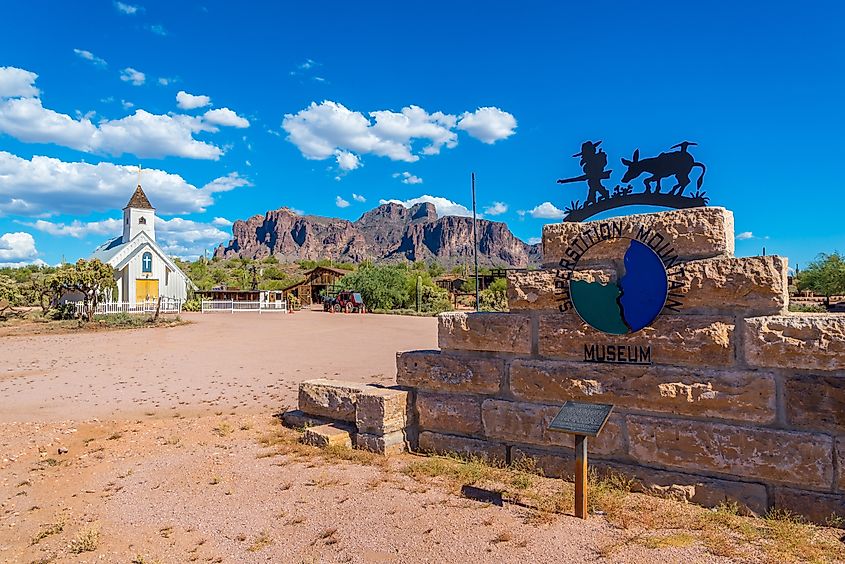
The Superstitious Mountain Lost Dutchman Museum is situated on a 14-acre campus, near the stunning Superstitious Mountains, renowned for their rugged red cliffs, volcanic peaks, and vibrant colors at sunrise and sunset. Like the mountains themselves, the museum is steeped in the mystery, legends, and lore of the Old West. Through exhibits and interactive displays, it tells the story of the infamous Lost Dutchman Gold Mine that lured prospectors to the area in search of gold. According to legend, a family from Mexico discovered a rich gold mine in the 1840s, but a local Indigenous tribe killed them during their last expedition ferrying gold back to Mexico. Jacob Waltz (“the Dutchman”) supposedly located the mine, but met with the same fate as the previous prospectors.
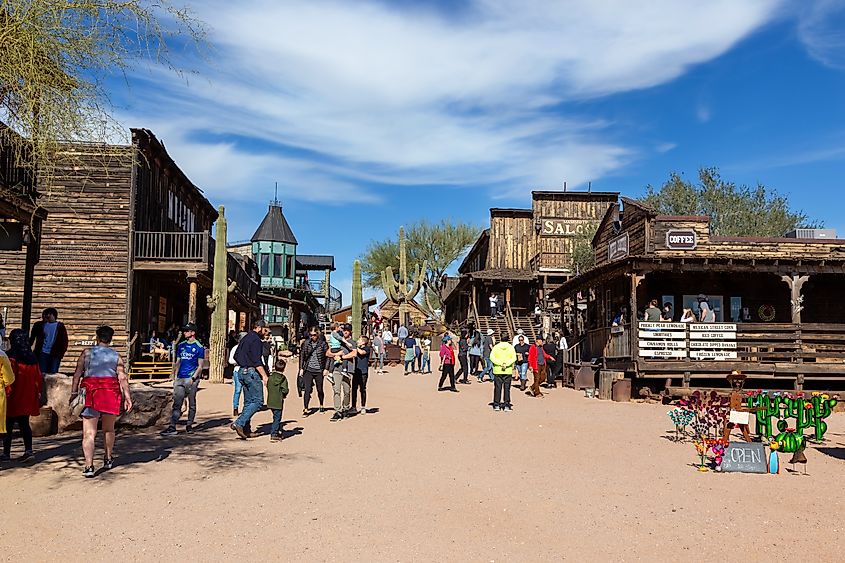
Today, the museum features a working replica of an “arastra,” a primitive ore-grinding mill used to extract gold and silver from rock, a stamp mill, a railroad exhibit, and, oddly enough, The Elvis Chapel, a building used in the film industry gifted to the museum. The quirky museum also hosts a regular lecture series, where you are invited to bring your own chair and enjoy lunch in the Apacheland Barn.
Keep the intrigue and mystery alive after your museum visit by driving down the road to the nearby Goldfield Ghost Town, a fun tourist attraction where you can tour the Goldfield Mine, watch a reenacted gunfight, pan for gold, and sluice for gems.
Phoenix Art Museum, Phoenix
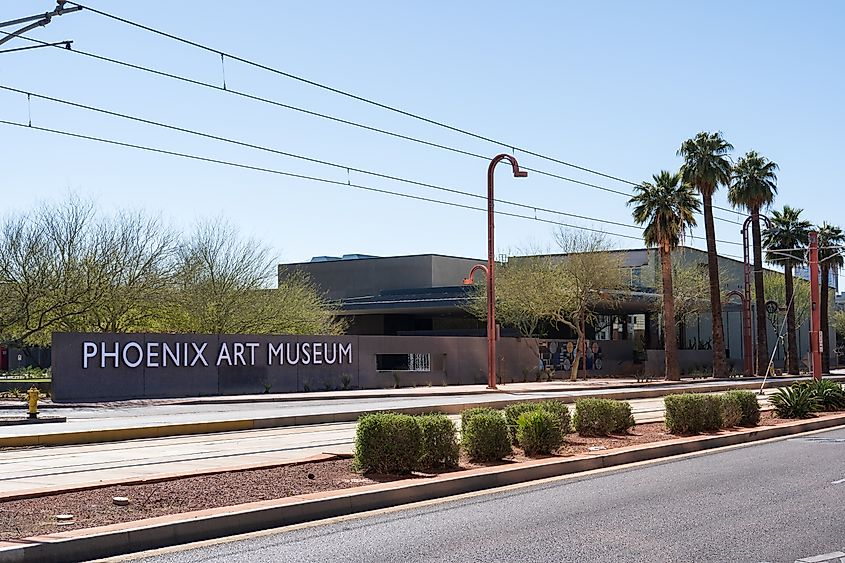
The Phoenix Art Museum (PhxArt), located in downtown Phoenix, has been welcoming art lovers for over 60 years. The museum is home to over 20,000 works and objects of art, encompassing American, Latin American, Western, Asian, European, Modern, and Contemporary Art. A few highlights to include on any visit to PhxArt are the Instagram-loved infinity mirror room called “You Who Are Getting Obliterated in the Dancing Swarm of Fireflies,” by Yayoi Kusama, Monet’s “Flowering Arches, Giverny,” and “Flower Vendor,” by Mexico’s most famous muralist, Diego Rivera. Take advantage of “Pay-What-You-Wish Wednesdays,” where general admission is free, but special exhibitions require a ticket. Alternatively, enjoy “First Friday,” where admission is free the first Friday of each month from 5 to 8 PM.
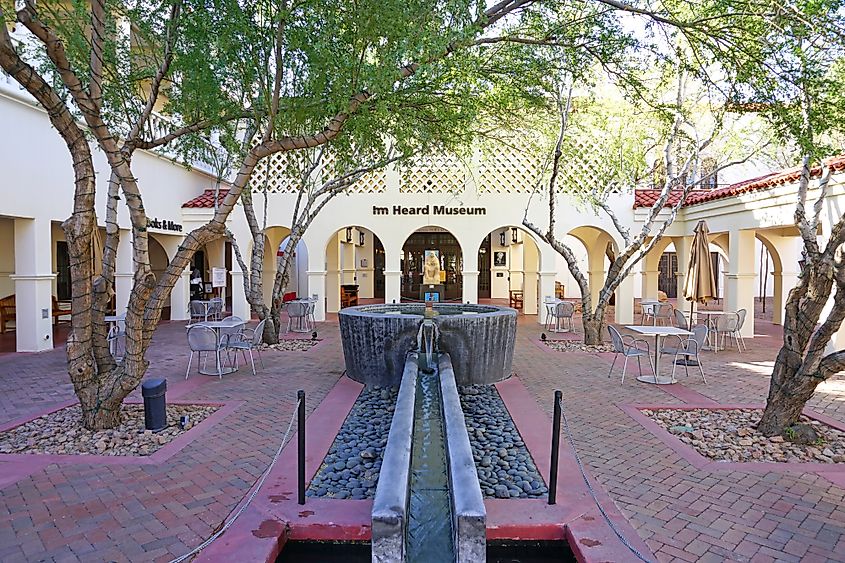
Make it a 2-for-1 museum day, and after visiting PhxArt, walk ten minutes to the Heard Museum. The museum showcases the art, culture, and history of Native American peoples through both traditional and contemporary art forms, featuring a collection that exceeds 40,000 items. Stop at the eclectic Heard Museum Shop for one-of-a-kind, authentic Native jewelry, art, and gifts that support living artists.
Arizona Copper Art Museum, Clarkdale
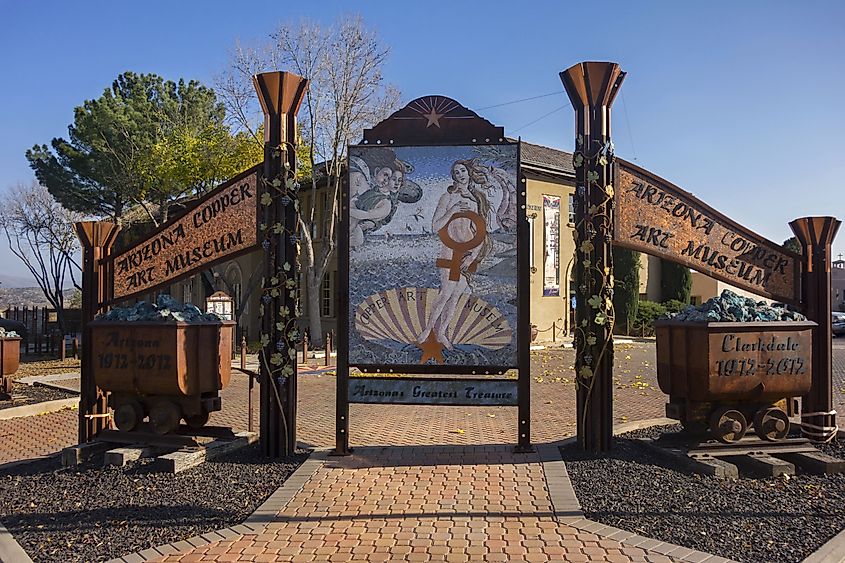
The small town of Clarkdale, Arizona, is synonymous with copper, which is proudly showcased in the top-rated Arizona Copper Art Museum. The museum is home to a massive collection of over 5,000 works of art and architecture in copper, spanning from 3500 B.C. to the present day. Stroll through the various rooms to discover a variety of incredible copper art, including “trench art,” made by soldiers during World Wars I and II, using spent artillery shells and bullet casings. Other fascinating exhibits include a Distillery and Winery Collection and a Kitchenware Collection.
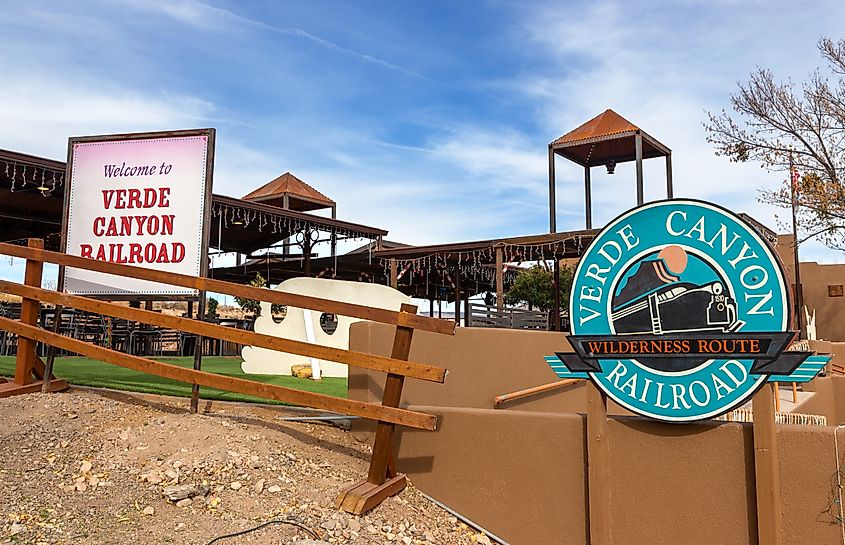
Wind up the day in Clarkdale with a 4-hour train ride on the Verde Canyon Railroad’s historic route into Arizona’s other “grand canyon.” The trip takes you from the Clarkdale train depot to Perkinsville and back deep into the Sedona red-rock country, passing by a world of incredible scenery and wildlife, over vintage trestles, and through a 734-foot tunnel over a century old. Enjoy a complimentary bottle of bubbly and a charcuterie board along the tracks.
Meteor Crater & Barringer Space Museum, Winslow
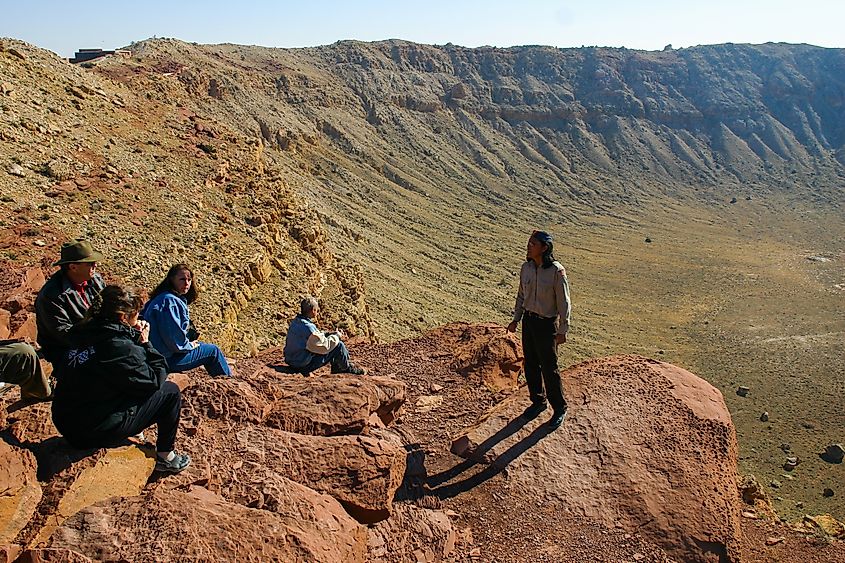
Approximately 50,000 years ago, a massive iron-nickel meteorite slammed into what is now northern Arizona, creating a one-mile-wide, 550-foot-deep crater. Today, Meteor Crater (also known as Barringer Crater) is the best-preserved meteor impact site on Earth. It is also a popular family- and dog-friendly (dogs can stay at the onsite “Pet Ramada” during your visit) tourist attraction where you can walk along the edge of the crater on guided or self-guided tours, snap selfies from the four lookout points, and explore the onsite Barringer Space Museum, full of hands-on exhibits, films, and displays on the science and history of meteor impacts.
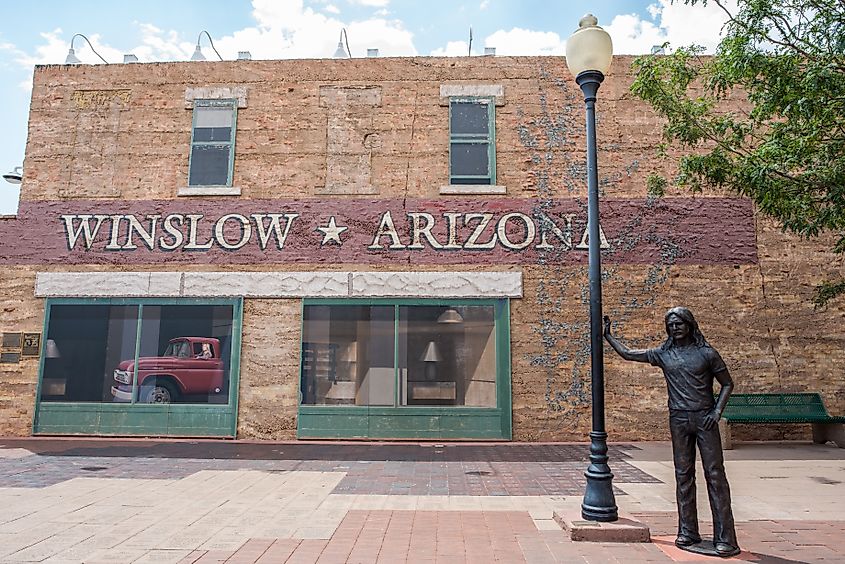
Fuel up at the onsite mining-themed coffee house before driving about 18 miles to Winslow, the small town immortalized in the song “Take it Easy,” by the Eagles in 1972. Visit Standin’ on the Corner Park for the requisite selfie at the famous mural and statue inspired by the song, then visit the Old Trails Museum to learn about Winslow’s history from prehistoric days to its railway and Route 66 days.
Arizona Museum of Natural History, Mesa
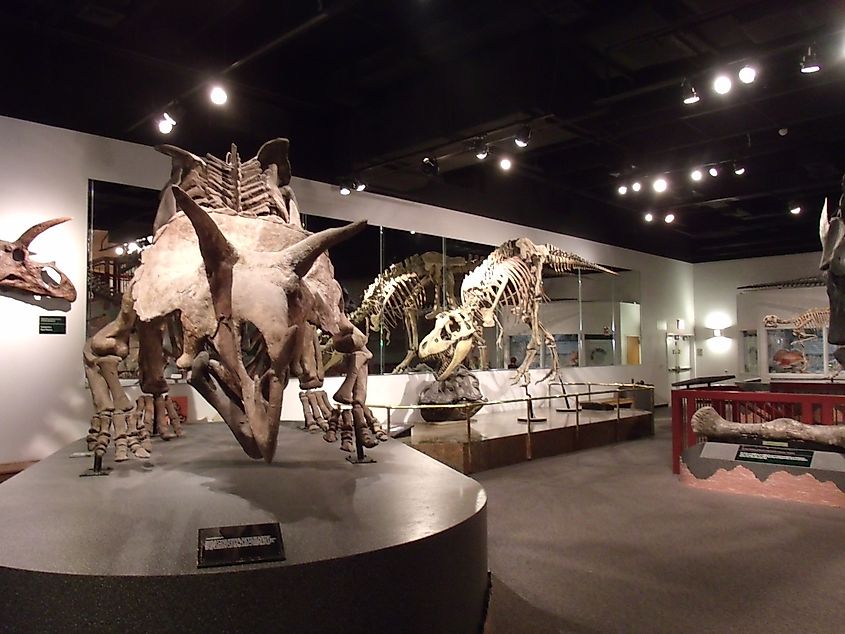
The Arizona Museum of Natural History is the perfect day trip for dinosaur and fossil fans, especially families with dinosaur-obsessed kids who love enormous skeletons, DIY fun like a Paleo Dig, and interactive displays like Dinosaur Mountain, where a flash flood cascades down the mountain every 23 minutes. For the grown-ups in the group, the Southwest Cultures Gallery showcases Indigenous groups, replicas of Hohokam villages, and ancient artifacts. Not to be overlooked is the Cenozoic Lobby, where you can see a Columbian mammoth, a one-toed Hagerman Horse, an American mastodon, and other mammoths from the Ice Age.
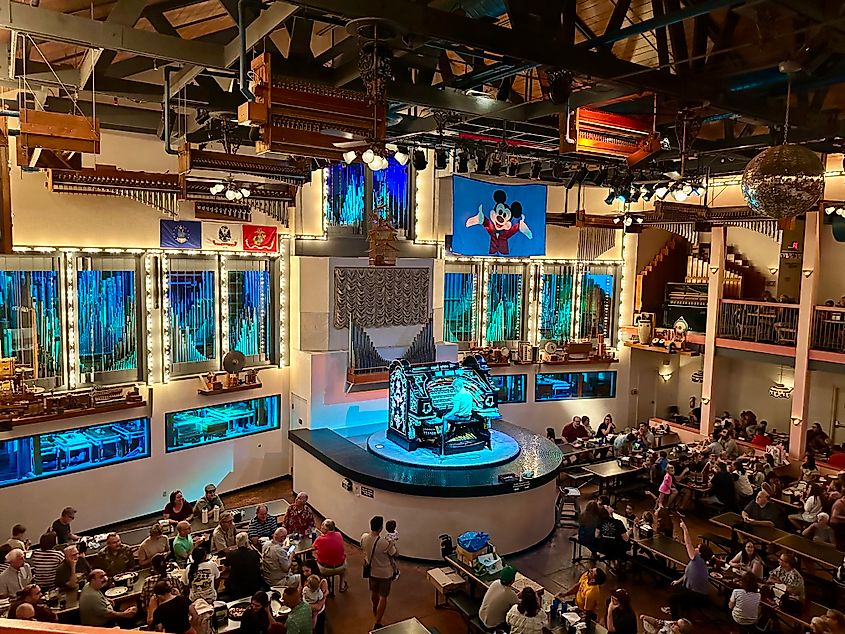
Wind down after the visit to the museum with lunch or dinner at Organ Stop Pizza, where you will be entertained by music played on what’s claimed to be the largest Wurlitzer Organ in the world. Enjoy building your own custom pizza from a variety of toppings in this 700-seat one-of-a-kind restaurant, while above you, pressurized air pumps through 6,000 pipes of the 1927 organ, playing organ classics like the theme from “Star Wars,” “The Sound of Music,” and “The Flight of the Bumblebees.”
Arizona-Sonora Desert Museum, Tucson
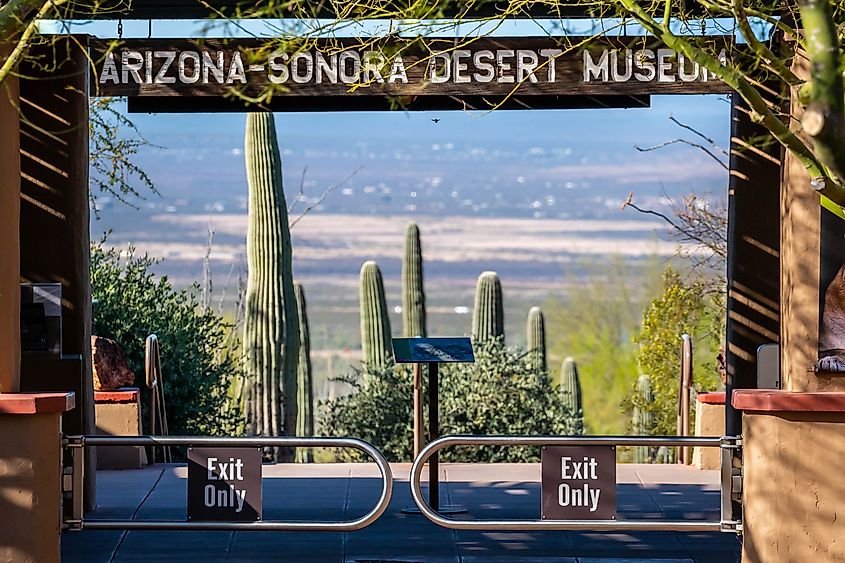
With approximately 85% of the Arizona-Sonora Desert Museum located outdoors, visitors should come prepared for the desert climate. Wear comfortable walking shoes, a sunhat, and sunscreen, and bring plenty of water. Pick up a map at the entrance or download one in advance to explore at your own pace using GPS. Along the trails, you’ll encounter remarkable exhibits such as Mountain Woodland, home to mountain lions, black bears, and Mexican gray wolves; Cat Canyon, where smaller desert cats roam; and the Birds of the Sonoran Desert aviary, where native species fly freely through a spacious enclosure.
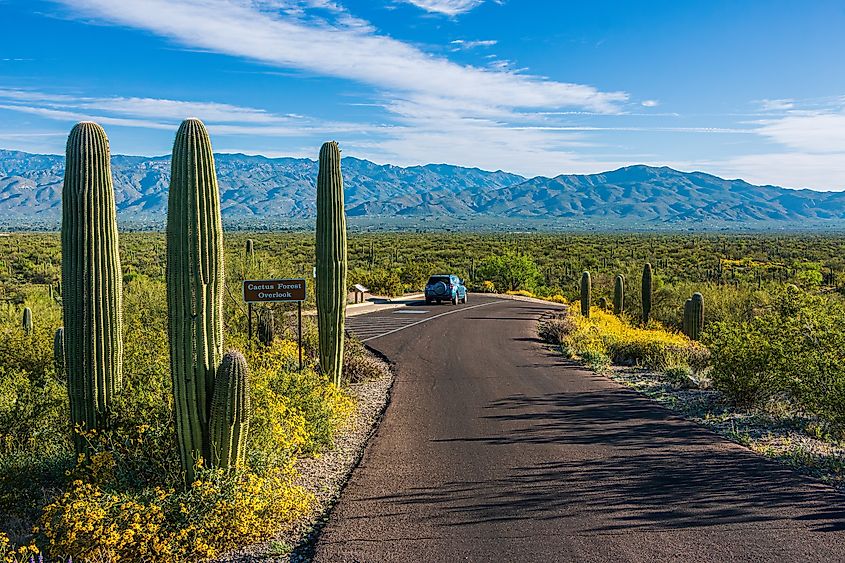
After your visit, take a scenic drive through Saguaro National Park just minutes away, where you can stretch your legs again on a short nature trail surrounded by one of the world’s most majestic plants, the saguaro cactus. Be on the lookout for roadrunners, horned lizards, Gila monsters, and kangaroo rats, all of which are often spotted in the park. Don’t forget your camera to snap pictures of the breathtaking desert vistas.
Yuma Territorial Prison State Historic Park, Yuma
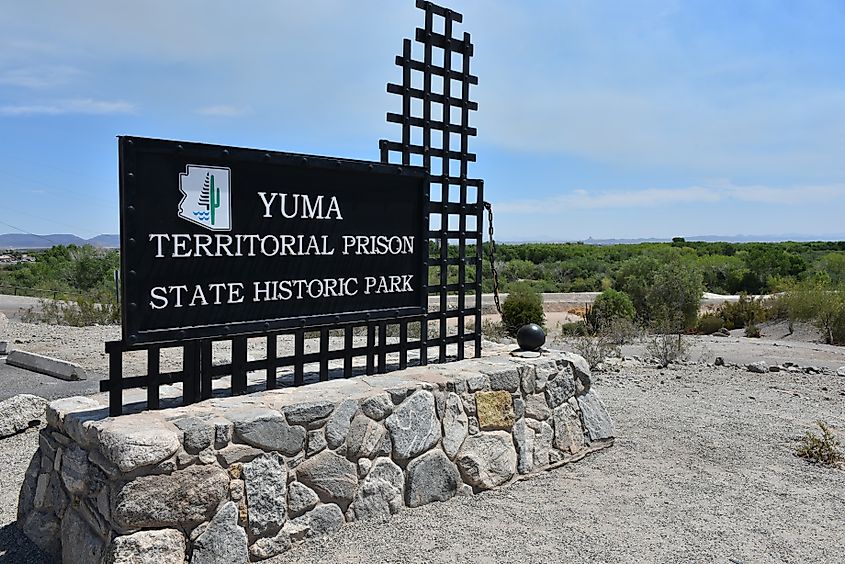
Not your run-of-the-mill museum, the Yuma Territorial Prison State Historic Park preserves the remains of Arizona’s first prison. It was built by inmates and opened in 1876, housing Arizona Territory’s most notorious outlaws. At one time, the prison was home to over 3,000 prisoners during the prison’s 33 years in operation. Today, you can learn more about its history in the Visitor Center, then explore original cellblocks, the guard tower, the dark cell, and more. A 3,600-square-foot museum contains prison artifacts, and exhibits about prisoners and guards. The atmospheric park sits on a bluff overlooking the Colorado River.
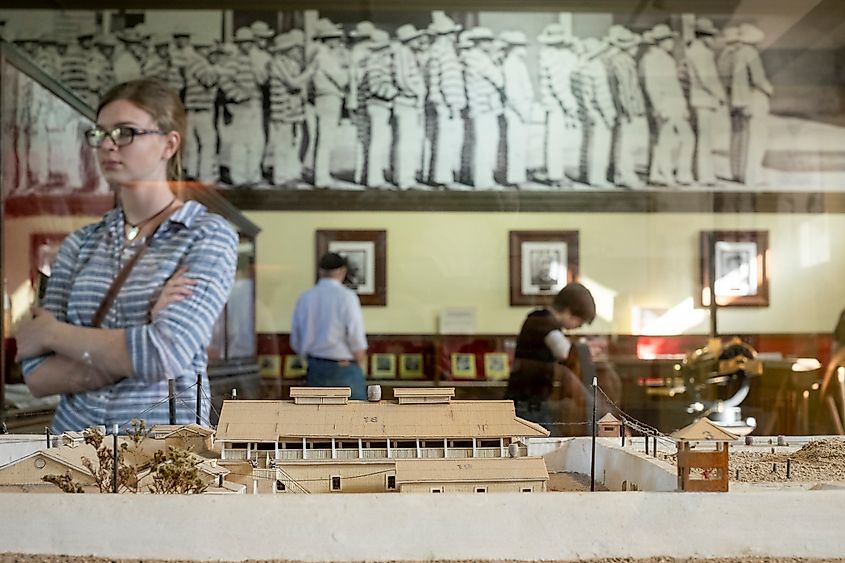
Head to downtown Yuma after exploring the prison + museum, and stop for lunch at the local favorite, Lutes Casino. With a decor that can only be described as “eclectic,” you’ll enjoy looking at all the memorabilia that adorns the restaurant’s 12-foot-high walls. There is a poster of Laurel and Hardy, another of Babe Ruth, an old gas station sign hangs from the ceiling, and a row of old-fashioned pinball machines to play. The menu features comfort food like double cheeseburgers, roast beef sandwiches, and fish tacos, with a separate kids’ menu offering corn dogs, cheese quesadillas, and grilled cheese.
Discover Legends, Landscapes, and Lost Treasure in Arizona’s Best Museums
Known as the Grand Canyon State, Arizona is a place where natural wonders and creativity collide in the most spectacular way possible. Whether you’re exploring the depths of Meteor Crater, discovering Cold War relics buried deep underground, tracing legends of lost gold in the Superstition Mountains, giggling over giant fossilized poop, or wandering through the vibrant galleries of Phoenix and Tucson, Arizona invites you to dig deeper, literally and figuratively. From history buffs to dark tourists, animal lovers to art enthusiasts, everyone will find a museum to love in this story-filled state.










